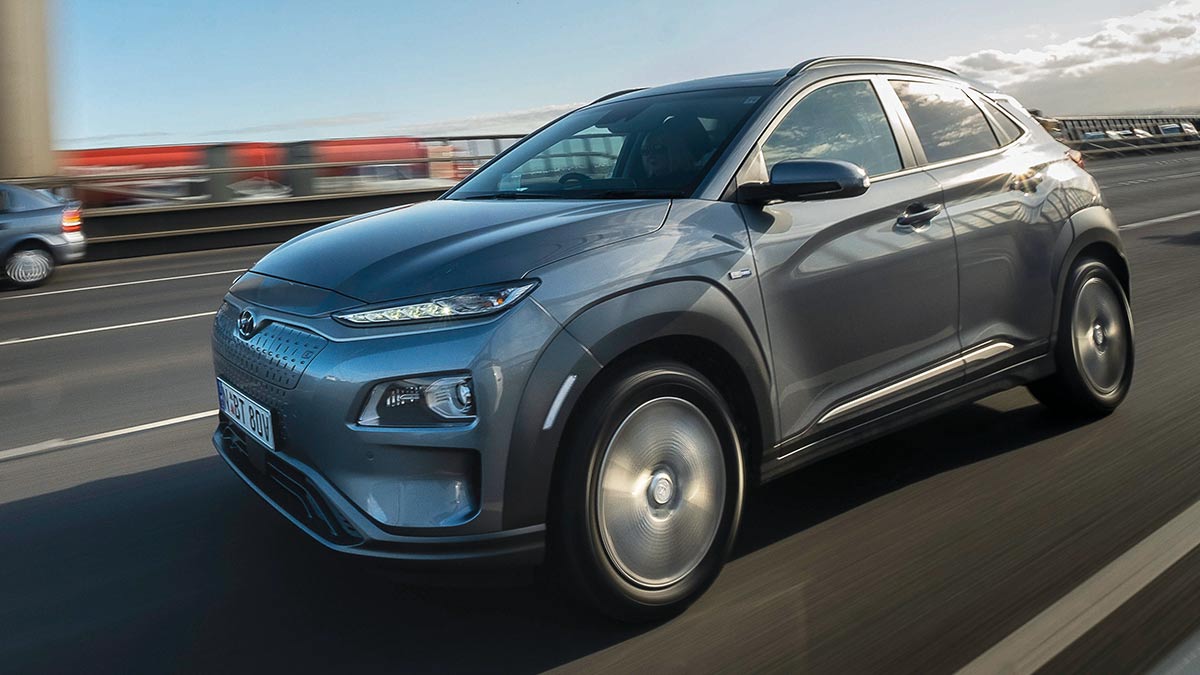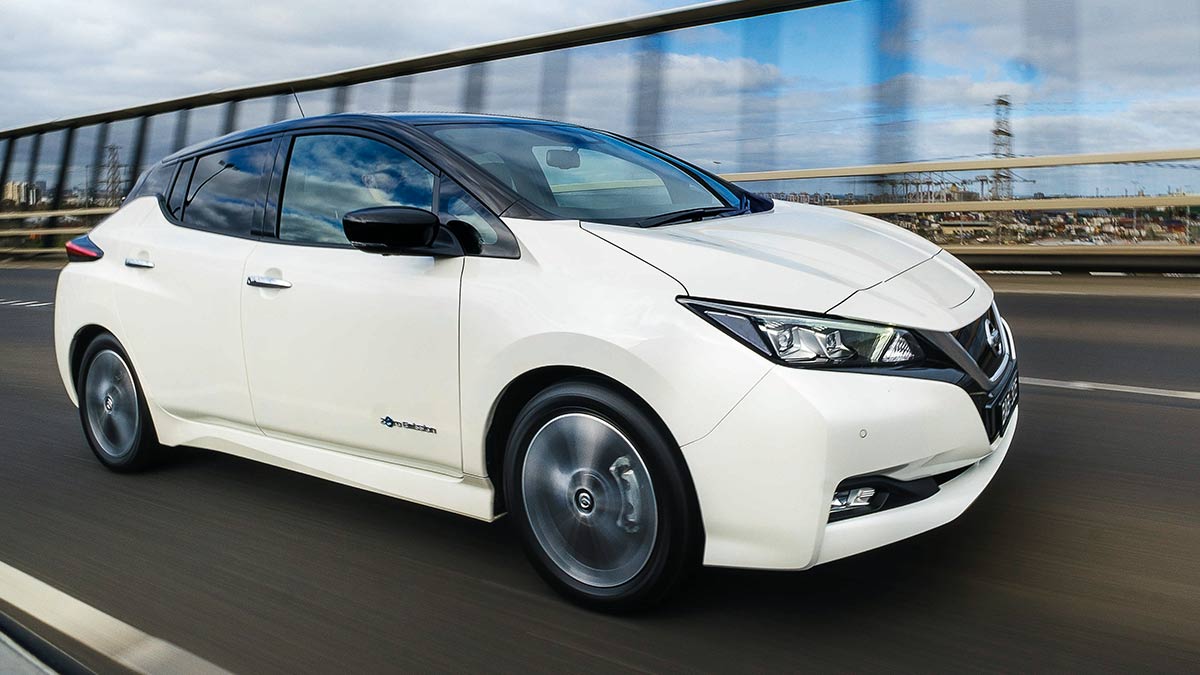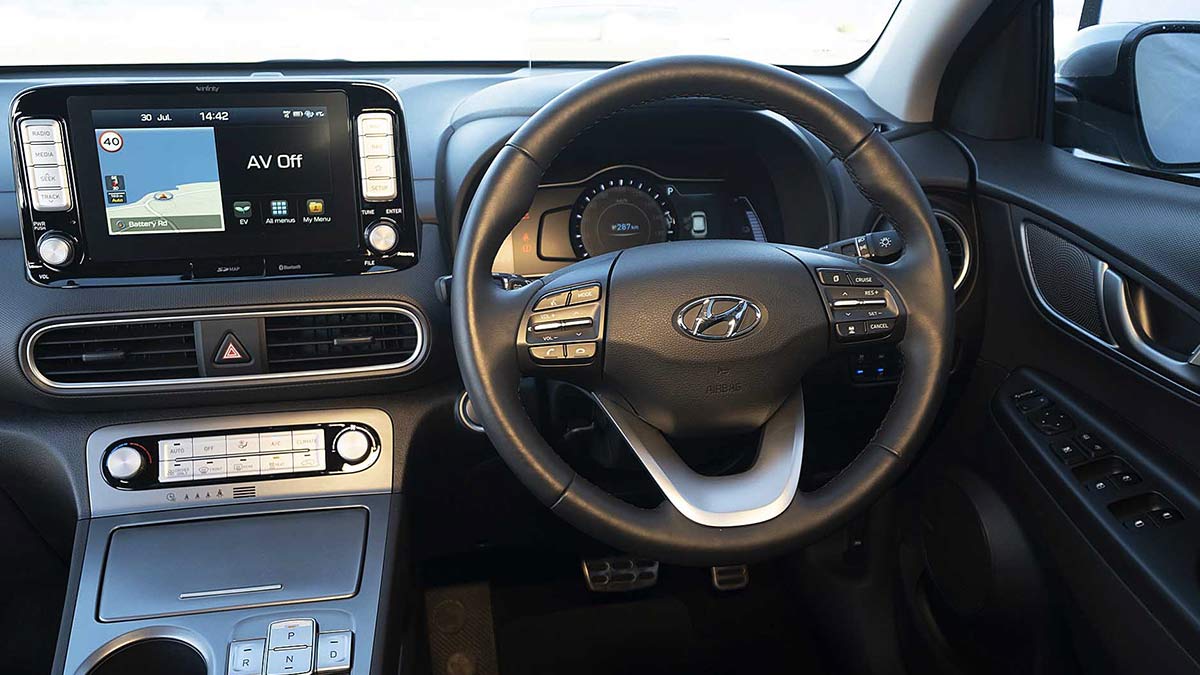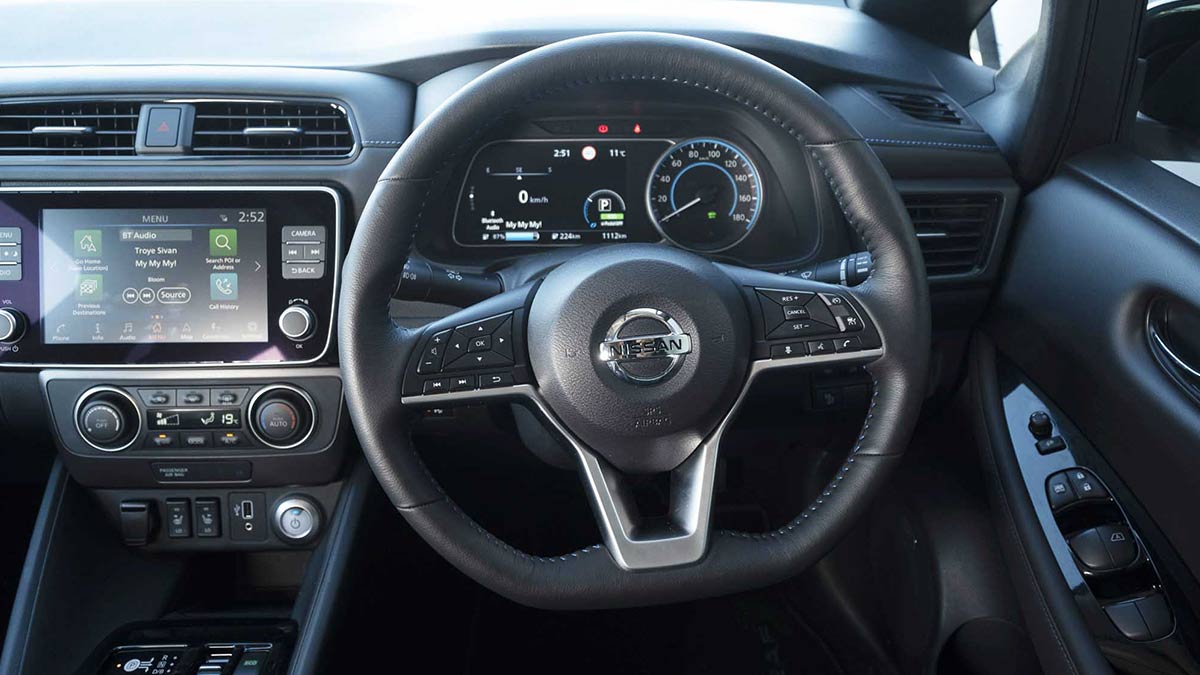The first battery-electric Toyota HiLux is set to arrive in Australia in 2026. The HiLux EV offers the same off-road capability and 3500kg towing capacity as the rest of the diesel-powered range, but with a driving range of 350km NEDC, may have limited appeal outside of specific fleet usage.
EV comparison: We put the Hyundai Kona and Nissan Leaf to the test
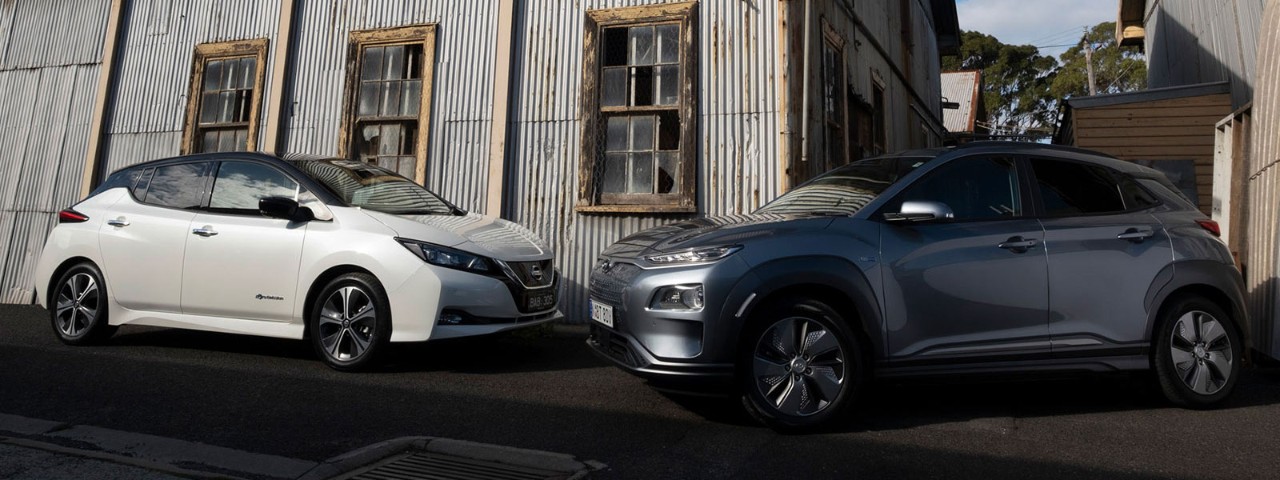
EV comparison test: Hyundai Kona Electric Highlander v Nissan Leaf.
EVs make up less than one per cent of the overall new-vehicle market but low and zero-emissions vehicles are finally starting to gain some traction.
The relatively high entry prices are among the main reasons many Australians won’t consider an EV at this early stage, as is our lack of charging infrastructure. But eventually – by mid to late next decade – electric vehicles are expected to be priced at parity with equivalent internal combustion engine models.
Until then, we have just a few vehicles available in Australia and many of them are premium offerings that start north of $100,000. We selected a pair of the more affordable EVs on the market to see what they’re like to live with and test their real-world driving range.
Hyundai Kona Electric Highlander
Thumbs up: Real-world range, engaging drive.
Thumbs down: Expensive, rear-seat occupant space.
Nissan Leaf
Thumbs up: Interior space, ride quality.
Thumbs down: Feels dated inside, driving range.
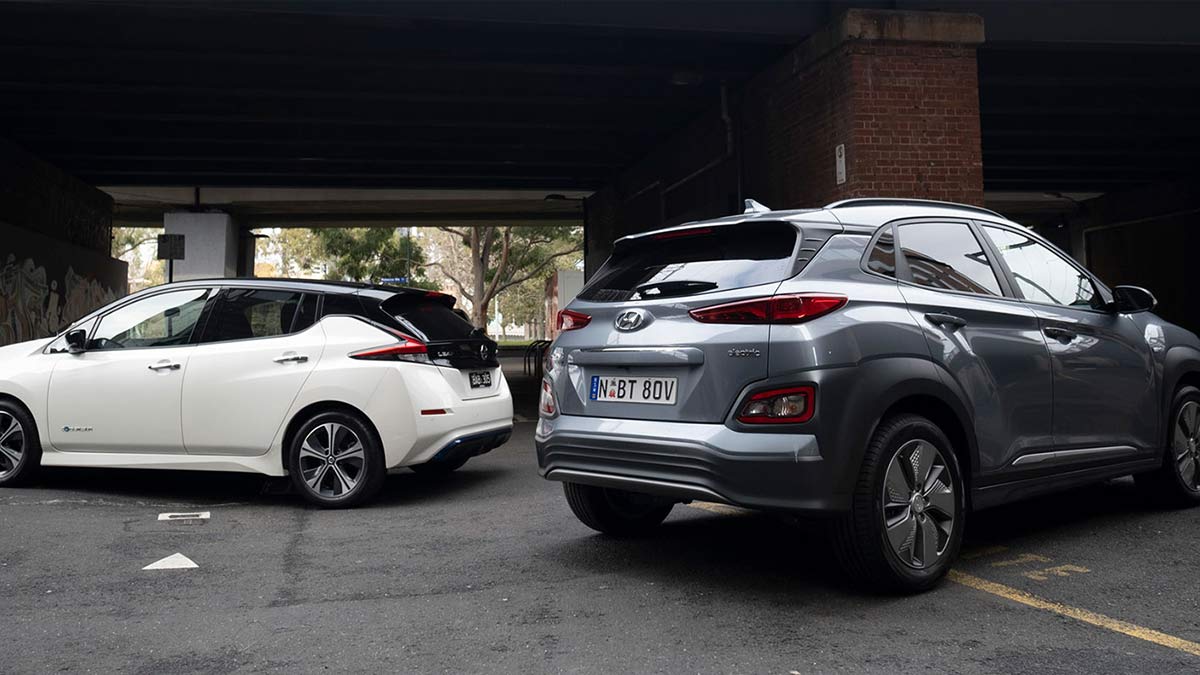
Photo: Shannon Morris
The second-generation Nissan Leaf arrived mid-2019, just a few months after the Hyundai Kona Electric small SUV. Pricing for the Leaf starts at $49,990 before on-road costs and the Kona Electric at $59,990, but our Highlander test car is $64,490. The electric Kona might be $10-15k dearer than the Leaf, but it has the Nissan beat when it comes to standard gear.
Still, neither car is cheap. A small hybrid hatch like the Toyota Corolla kicks off from about $26,000 – $24k less than the Leaf; the most expensive petrol Kona is $39,000, a $20k saving on the Kona Electric. Cheaper servicing and money saved on charging rather than refuelling electric cars help justify the price premium to some extent, but it’s still a leap from a petrol or diesel vehicle.
EVs are more at home in an urban setting where there are more charging options, but we wanted to take the Kona and Leaf up the Hume Highway from Melbourne to Albury, powering up at the growing Chargefox EV charging network.
Our first stop was Chargefox’s new station at Westfield Airport West. Charging an EV at a public station is relatively easy with the Chargefox app. Once you’ve created a profile and added credit-card details, you connect to the charger in the app then connect the charging cable to the car. A glitch with the app was quickly fixed by someone at the company’s 24-hour customer care line.
The Leaf has a ‘CHAdeMO’ style charging plug favoured by many Japanese manufacturers, while the Kona Electric uses the ‘CCS2’ port that is slowly becoming the global standard. Even Tesla’s Model 3 now has a CCS charging outlet.
The Kona has an impressive 449 kilometres’ range according to the WLTP (Worldwide Harmonised Light Vehicle Test Procedure) program, and the Leaf has 270.
While Chargefox’s 350kW Ultra Rapid chargers can charge 400 kilometres of range in 15 minutes, there is currently no EV available in Australia with the capacity to take that charge. Porsche’s upcoming Taycan will be the first that can be charged in 15 minutes. Chargefox’s 50kW fast chargers can add 60 kilometres of range in 15 minutes.
Both vehicles had a decent amount of charge, but we wanted to top them up before we hit the highway. A quirk of battery electric vehicles is that the more charge they have, the slower they are to charge. Our first charge took about 45 minutes.
We left Airport West with 357 kilometres’ range (96 per cent battery) in the Kona and 235 kilometres (95 per cent) in the Leaf. The drive to the next charging station at Euroa was about 170 kilometres. Given the distance between charging stations, we mostly stuck to the freeway, except for a brief dynamic drive route from Airport West to the Hume Freeway at Donnybrook.
As the Leaf’s charge dropped fast on the freeway we weren’t sure it would make the distance to Euroa. But we did. Just. We arrived with just 18 kilometres’ (7 per cent) charge left in the Leaf, giving us a taste of real-life range anxiety. By comparison, the Kona still had about 150 kilometres of charge remaining.
The next leg from Euroa to Barnawartha North, near our final destination of Albury, was about 140 kilometres. The Leaf had 230 kilometres after charging at Euroa and arrived at Barnawartha North with 53 kilometres. The Kona had 435 kilometres at Euroa which dropped to 232 kilometres. Charging at Barnawartha North Chargefox took about 25 minutes.
As the drive was predominantly on the freeway, there was little chance for the cars to recapture energy through regenerative braking. The Leaf’s e-Pedal function uses the accelerator as a brake and can bring the car to a complete stop. The Kona too has different levels of regenerative braking that can bring the car to a stop.
When driving both cars in an urban environment, where there is more braking and stop-start traffic, you can see the regenerative braking working to recoup energy. But until more charging stations are up and running in regional areas, driving EVs long distances will remain a challenge.
During the brief dynamic section of our route, the Kona proved itself to be a seriously fun drive, with the handling characteristics of a small warm hatch. The Leaf lacked the same prowess. Steering in both cars felt synthetic and heavily weighted, but ride quality is impressive.
The Kona isn’t as well insulated as the Leaf, with a lot of tyre roar and road noise creeping into the cabin.
Inside, the Kona Electric differs from the non-EV version with a raised centre console housing the transmission buttons and a storage area underneath, and it gains unique trim colours and materials.
The Kona’s cabin is more appealing than the Leaf’s which has a generic look and dated switchgear. The Leaf has much more occupant space in the second row compared with the Kona, which has poor knee and toe room. The Kona’s shallow 332-litre boot is easily beaten by the Leaf’s 405 litres.
The verdict
The Kona feels more modern than the Leaf and, despite the price difference, the Hyundai is the car we would take home in this comparison. The Leaf is great as a city car, but any jaunt beyond urban boundaries would have to be carefully planned.
|
Price |
Price as tested: $64,490 plus on-road costs. |
Price as tested: $49,990 plus on-road costs. |
|---|---|---|
|
Drivetrain |
Motor: Electric motor and 64kWh lithium-ion battery |
Motor: Electric motor and 40kWh lithium-ion battery. |
|
Driving range/emissions |
Official range: Approximately 449km WLTP. |
Official range: Approximately 270km WLTP. |
